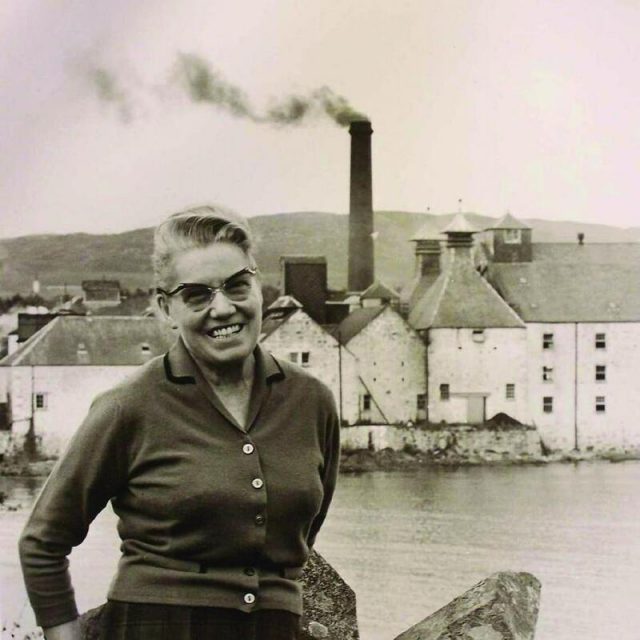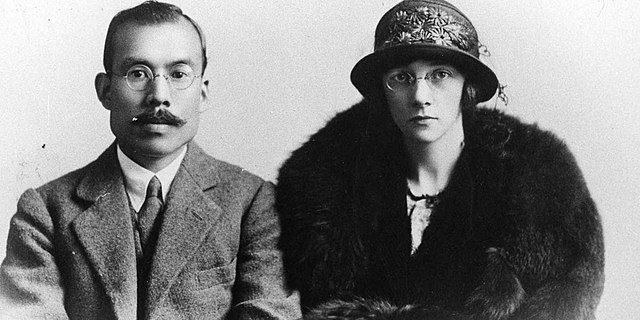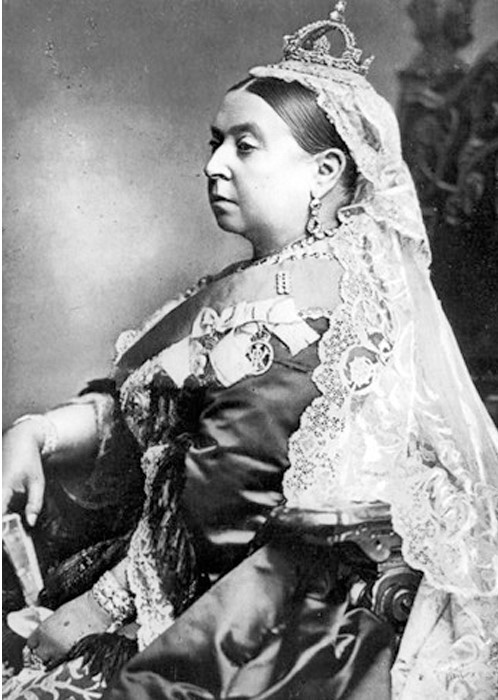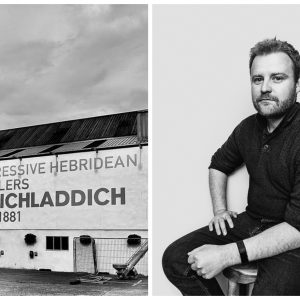The Most Notable Women in Whisky
Guest•Articles, Guests
*By Giannis Ekaterinidis
It is widely known that the recipe for making whisky, according to Scottish standards, is extremely simple. Only three ingredients are needed to create the water of life: malted barley, water, and yeast. However, how these materials are combined is what makes each whisky unique. Each ingredient plays its role in the final product. Every step in whisky production holds significant importance, and step by step, those flavor notes that we love to distinguish when trying a new label are created. The taste, body, aroma, and finish are certainly the stars of a whisky bottle, but we often forget the hard work of the men and women in the industry, which is required to bring a bottling to life. Nothing happens by itself, and even though whisky was historically a male-dominated field, over time, more and more women in whisky have become involved, especially those engaged in the production process.
As the whisky industry evolves, more positions are filled by capable and dynamic women. Some are young, others experienced, some in leadership roles, while others hold more supportive positions. However, each one contributes in her own way to the development of our beloved spirit. It is clear today that the whisky industry, despite the still disproportionate ratio of men to women, is an excellent workplace for women who choose to follow this career path.
For those who do not know who Rachel Barrie is, I encourage you to read the article: Rachel Barrie: The Grande Dame of Scotch Whisky! already published on bitterbooze.com.
Let’s take a look at the pioneering women of whisky who changed the rules of the game and laid the foundations so that whisky is no longer just a male affair.
Elizabeth Cumming – The Businesswoman
While the prominent name of the Cumming family may be her mother-in-law, Helen, who with her husband John, laid the foundations of the Cardhu distillery in 1824 (we’ve all seen the ad with the flag that signaled when inspections were coming, and we know the stories about selling bottles through the window to passing travelers), the real entrepreneurial spirit belonged to Elizabeth, the wife of her son, Lewis, who took over the distillery after her husband’s death in 1872.
Alfred Barnard, in his 1887 book The Whisky Distilleries of the United Kingdom, refers to Elizabeth Cumming, writing:
“Mrs. Lewis Cumming personally managed the business for seventeen years, and the distillery’s success is due solely to her continued efforts. It was this lady who expanded the distillery in 1884. Before her, the distillery could produce only 500 gallons per week, but after the changes she implemented and the extensive additions, the new distillery produced 1,680 gallons per week. As a writer and correspondent, I am convinced that no one, man or woman, could compete with Mrs. Cumming.”

Η Elizabeth Cumming
As a result of her business moves, in 1893, she sold the distillery to the company Johnnie Walker and Sons, ensuring that her son John would remain on the board of directors and that no employee would lose their job, thus securing the future of her family and the employees of the Cardhu distillery.
At a time when the business world was not accessible to women, Elizabeth prematurely reshaped the structure of the whisky industry. She managed, alongside her business ventures, to raise four children, transformed the place by purchasing 16 acres of land, and invested in brand-new buildings and staff to meet the needs of the blenders who were buying whisky. Exceptional, unrivaled, and certainly one of the most memorable women in whisky.
Elizabeth Leitch ‘Bessie’ Williamson – The Lady of the Island
When she accepted a supposedly temporary summer job at the Laphroaig distillery, no one expected this woman to become one of the most iconic figures in whisky, at a time when the few women working in the industry held positions as cleaners or secretaries.
Bessie was born in 1910 in Glasgow, from a family with no connection to the whisky industry. She graduated from the University of Glasgow in 1932 with plans to become a teacher. However, in the summer of 1934, she decided to vacation on Islay with her best friend, Margaret Prentice. She learned about a temporary job opening at the Laphroaig distillery, applied, was accepted, and from that moment, she never looked back.

‘Bessie’ Williamson
She worked directly with Ian Hunter, the distillery owner, and after Hunter suffered a stroke in 1938, she took a management position.
In 1944, when the distillery was ready to resume production after being used as an ammunition storage during World War II, she took control. The company, D Johnston & Co, became a limited liability company in 1950, and Bessie Williamson took a small stake in the shares.
After Hunter’s death, Bessie was the absolute leader at Laphroaig, and under her leadership, our beloved “frog” enjoyed its glory days. Williamson took much of the credit for the rise of Scotch whisky in America. She was the only woman to run a distillery in Scotland in the 20th century, contributing enormously to the modernization of Laphroaig, and remained as chairman and managing director of D Johnston & Co Ltd until her retirement in 1972.
She was also one of the most beloved figures on Islay for her contributions to the social and business life of the island, playing a key role in the Scottish Women’s Rural Institutes and organizing many events to raise funds for the local community. In 1963, she was awarded the Order of St John for her charitable work.
Rita Taketsuru – The Mother of Japanese Whisky
Jessie Roberta Cowan, her real name, was born in 1896 in Kirkintilloch, a small town near Glasgow, and played a vital role in bringing whisky to Japan. If Masataka Taketsuru is the father of Japanese whisky, then Rita is undoubtedly the mother.
Rita Taketsuru was the daughter of a local doctor and enjoyed a carefree childhood. After her father’s death, her family faced financial difficulties, and it was around this time that she met her future husband, Masataka Taketsuru. The couple married on January 8, 1920, despite social objections (especially from the groom’s side) due to cultural differences, and they moved to live in Japan.

Masataka και Rita Taketsuru
Rita supported her husband in every way. According to Nikka’s international sales manager, Emiko Kaji, Rita Taketsuru’s role was crucial in helping Masataka realize his dream. Beyond her connections in Scotland and her physical presence, she also financially supported the business during difficult times. Nothing would have been the same without her contribution, earning her a place as one of the most important women in whisky.
Queen Victoria – The Crown in the Service of Whisky
We could easily call her the queen of whisky. It’s hard to imagine the stern monarch as a party animal, but her passion for the spirit was so great that the aristocracy of the time abandoned brandy.
It is said that the Queen discovered whisky when she and her husband, Prince Albert, visited the Highlands for the first time in 1842. However, there are reports that in 1841, the Prince of Wales, Charles A. Murray, as a member of the royal court, wrote a letter to Daniel Campbell of Islay, requesting a cask of whisky for the Queen’s cellar from the best Islay Mountain Dew. The cask was apparently delivered to J. Christie Esq, Gentleman of the royal cellar at St. James’ Palace in London.

Η Βασίλισσα Βικτώρια
We know that by that time, Victoria had granted the Royal Warrant to two Scottish distilleries on the mainland. First was the Brackla distillery, owned by former military man William Fraser, which had previously received a Royal Warrant from Victoria’s father, William IV. Victoria renewed the warrant in 1838, shortly after ascending the throne, and later granted a second Royal Warrant to the Scottish athlete and whisky producer, Captain William Barclay of Glenury. Since then, these distilleries were renamed Royal Brackla and Royal Glenury, earning tremendous respect.
*Baptized long ago in the water of life, Giannis Ekaterinidis remains a pure lover of three ingredients: water, malted barley, and yeast! In 2009, he decided to take a backpack and embark on his first trip to Scotland to see how his beloved spirit is made. From that moment until today, he has visited dozens of distilleries and has countless stories to share, filled with peat, spices, and citrus notes. He is a founding member of the Greek Whisky Association (G.W.A.) and has authored several articles on the internet about his favorite spirit.





